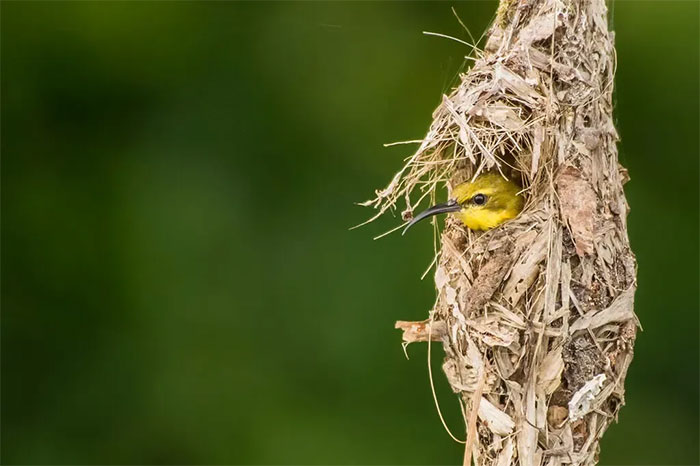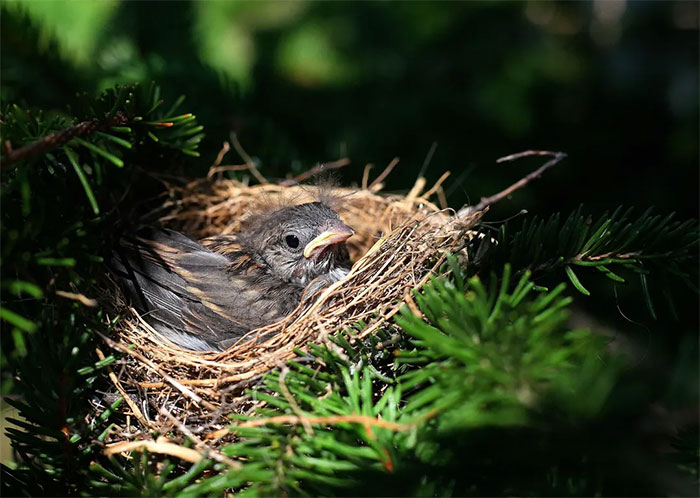Some bird species exhibit the behavior of building intricately domed nests, even though many ecologists have long believed that domed nests provide better protection against threats such as predators or harsh weather. A recent study, however, demonstrates the opposite: simply designed nests are more beneficial in the long run.
Most songbird species originated in Australasia around 45 million years ago, when Australia was still connected to Antarctica and covered in lush forests rather than arid deserts. Statistical analyses of the characteristics and evolution of songbirds indicate that domed nests are an architectural style inherited from their ancestors. However, this design was quickly replaced by the simple cup-shaped design as songbirds began to spread across the globe around 40 million years ago.

A purple-throated hummingbird inside its domed nest.
Some evolutionary biologists, like Iliana Medina from the University of Melbourne, wonder why the domed nest design has been abandoned by most modern bird species, and why only ⅓ of them still maintain this type of nest. To answer this, her research team examined the ecological success of bird species that build ancestral-style nests compared to those that use modern cup designs, then linked the findings to their evolutionary history.
For over 3,100 songbird species, Dr. Medina and her colleagues collected as much data as possible: the body and range of the birds, their latitude and altitude, and most importantly, the type of nest they build.
Her analyses, published last month in the journal Ecology Letters, revealed surprising information. Bird species that choose domed nests tend to have smaller population ranges and more stringent climate requirements.
Dr. Medina’s results contradict previous hypotheses that building domed nests would allow species to expand their ranges more rapidly while withstanding a wider variety of weather conditions. From this, she concluded that species that build domed nests are less adaptable than those that build cup-shaped nests. While domed nests offer better protection from predators and weather, they also tend to be larger, making them more detectable by enemies. Larger nests also require more time and materials to construct, limiting the timing and locations where they can be built, making it difficult for birds to abandon these sturdy homes.
Jordan Price, an evolutionary biologist at St. Mary’s College of Maryland, who did not participate in the study, stated: “To survive in the wild, it’s better to have a cheap nest, one that you can build multiple times in a season. You may have many inconveniences, but in return, your chances of survival increase when facing predators.”

A common cup nest.
The study also indicates that species that build domed nests are less likely to live in urban areas, possibly due to a lack of suitable nesting sites, a shortage of materials, and the warmer weather in cities.
Dr. Medina then reviewed the timeline, modeling the natural history of many ancient songbird species as well as newer ones over the past 45 million years. She discovered that species building domed nests have a higher extinction rate, contrary to the hypothesis that domed nesting is the safest option.
Today, birds that build domed nests face new challenges posed by humans, including climate change, habitat loss, and construction projects. Birds, like many other animal species, are experiencing an accelerating rate of extinction.
James Mouton, a postdoctoral researcher at the Smithsonian Migratory Bird Center, who was not involved in the study, remarked: “We can’t train them to abandon traditional nesting styles, but we can help restore and protect the habitats of domed-nesting birds, alongside strengthening vulnerable populations.”


















































